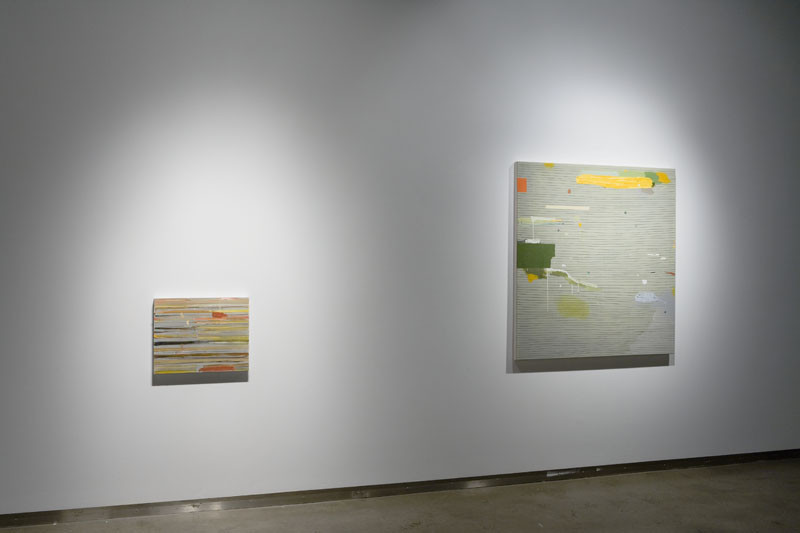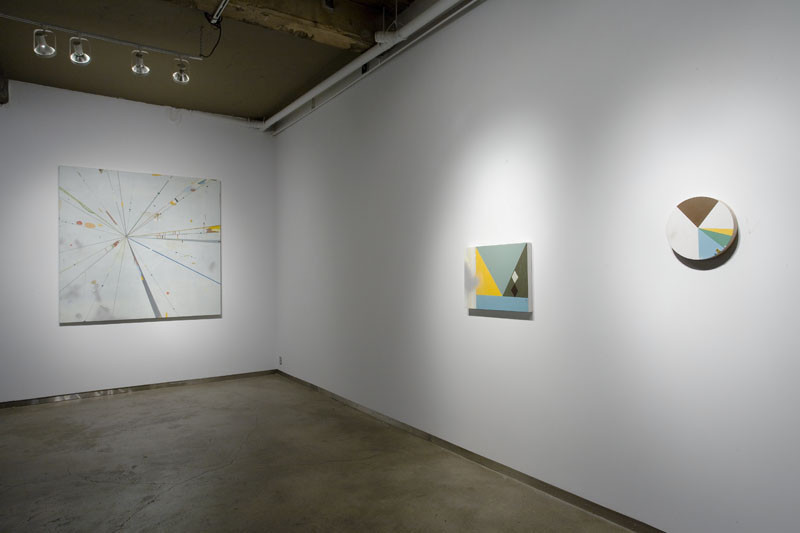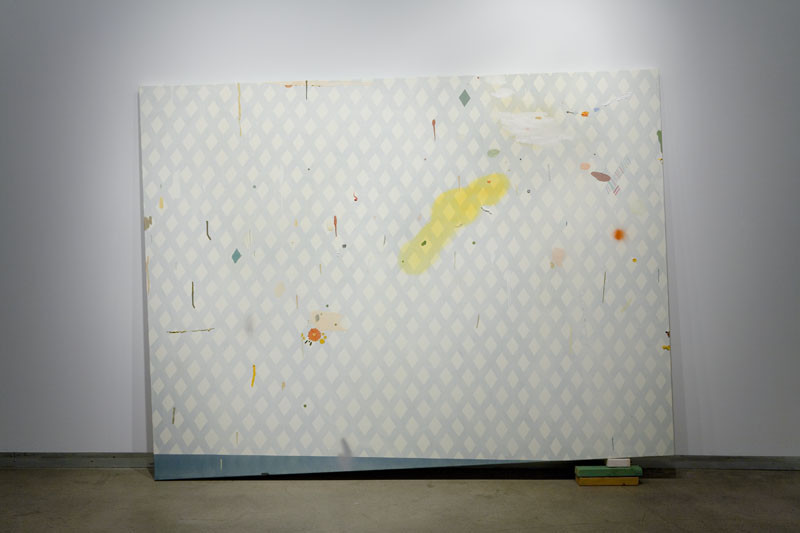



Painter, Justin Stephens has titled his recent painting and installation series The Success of Waiting. This work immerses the viewer into an eccentric universe, rich in colours and traversed by an aesthetic reminiscent of the carnivalesque.
With great detail, interspersed by figurative elements, the artist creates abstract works that turn away from painting's traditional conventions by questioning the inner rules, not only of his practice, but of painting as medium. This premise encompasses the entire work, to the point where perfect form and compositional balance are almost not considered. Rather, the research is oriented towards material that is affirmed through a purified, isolated, decontextualized form, as well as the variation of formats and supports.
Turning away from the automatisms of painting, Stephens juggles pictorial elements, developing a stylistic vocabulary that makes a pastoral, banal space cohabitate with a varied colour palette; earthy, faded colours at times create saturated, chromatic juxtapositions. Sharing the same room are also a few small installations, formed from an assemblage of incongruous objects.
The works of The Success of Waiting series offer an open reading, where the subject unveils itself with humour and escapes a predetermined space-time.
Esther Bourdages
In his most recent series of paintings, the Success of waiting, Justin Stephens questions the aesthetic standpoint he has previously—somewhat accidentally—established. Having arrived at the point where the absence of a subject had become the subject, Stephens' previous paintings triumphed a new formalism in which a process of non-strategic elimination defined the end result. The subject became the question of whether a false relationship between objects, gestures, and dys/functions could become meaningful. The answer lay in the meeting point between alienation from context and an understanding that the human compulsion to organize and categorize is largely unavoidable.
Progress on the conceptual side [of quantum physics] has been no less dramatic. It is based on a new approach to the problem of how to produce a quantum theory for a closed system, such as the universe, in which the observer must be considered part of the system. The key idea, proposed about 10 years ago by the mathematician Louis Crane, is that the quantum state of the universe should be replaced by a whole array of states. There should be one state for each way of dividing the universe into two regions, one containing the observer and the other containing what the observer sees. This idea has given rise to what are called "relational" approaches to quantum cosmology.1
As an attempted distraction from that which might really 'matter', the paintings in the Success of Waiting flirt with the notion of becoming matter in itself. The paintings become sketchy cartographic records of observation through the avoidance of any, one categorization system. This only fleeting commitment to form is realized in sudden distractions from the form's expected direction, humorous and self-referencing interludes, or ludicrous interruptions to an object's intention. In other words, Stephens, in an attempt to avoid creating a holistic and totalizing system of meaning has constructed an openly fallible, yet workable set of relations with which to view any (imposed) current concern or subject. The system's very fallibility opens it up to review, re-interpretation, and re-use; any possibility of reification is outright rejected. Flirting with the ridiculous, Stephens' paintings guarantee their inability to encapsulate universality, or even commitment to a temporal framework. They offer make-do solutions to temporary concerns and, therefore, refer to their forms as only fleetingly perfect compositions.
At the 17th Texas Symposium the fundamental parameters of our universe are still uncertain to about a factor of 2. I suspect that by the time of the 18th Symposium, two years from now in Chicago, they will have been measured by overlapping methods to 10% or better. And I am betting that the cosmological constant is different from zero.2
Clare Murphy
